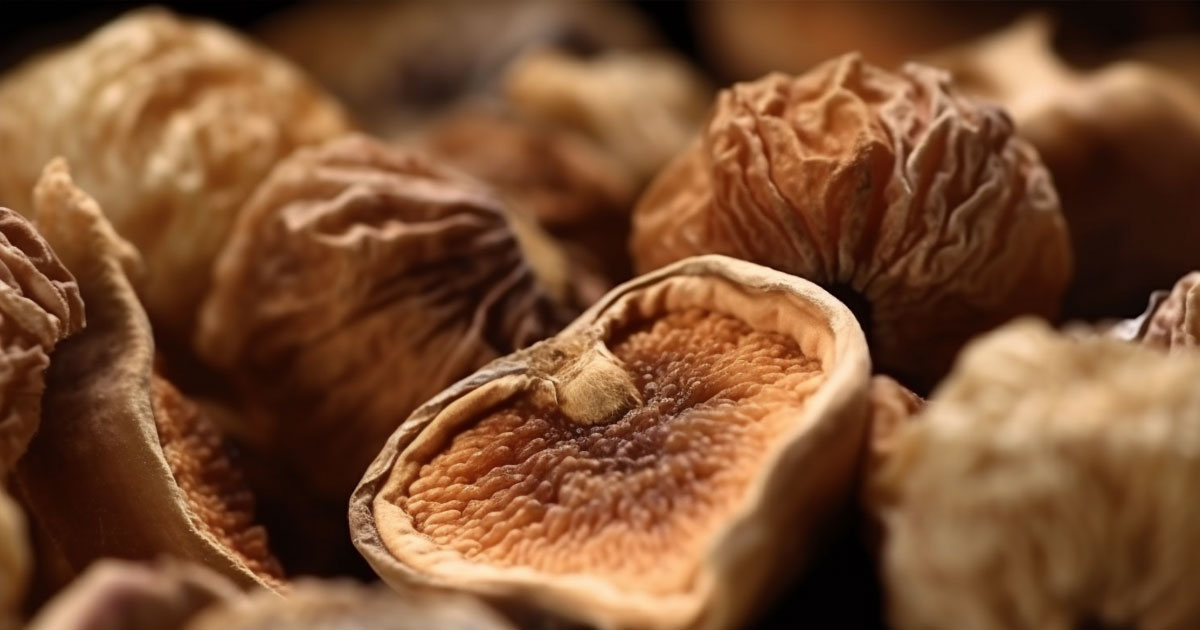
Humans have been eating figs for a very long time; in 2006 in fact, archaeologists discovered evidence of the cultivation of figs that dates back over 11,000 years. And though fresh figs are common in many countries and types of cuisine all over the world, it isn’t the most common way to eat them. Because of the short shelf life after harvest, nearly 90% of the world’s figs are sold as a dried fruit. Over the years, the drying process has improved greatly, and that allows the figs to keep their amazing flavor at the same time as preserving the nutrients that provide a wide range of health benefits.
A fig is the fruit of the Ficus carica plant, a small tree native to the Mediterranean region that has leaves with characteristic rounded lobes. Figs are usually 1-2 inch long tear-shaped fruits that start green and turn purple or brown when ripe. The flesh of the fig is typically a reddish color with dozens to hundreds of small, crunchy seeds. Figs are known for having a mild sweet flavor and can be made into jam or used as an ingredient in a wide variety of savory and sweet foods and snacks. Today, California is the largest producer of figs in the United States, and Turkey is the largest producer in the world.
Fresh figs only last about one to two weeks after harvesting before they go bad, so most figs available to consumers are dried in an industrial process that makes them last much longer while holding on to their nutritional value. With only 30 calories per fruit, figs provide a substantial amount of nutrients for their calorie count; this makes them a great addition to a healthy diet. Figs are also a good source of several vitamins and minerals: magnesium, potassium, copper, riboflavin, thiamine, manganese, calcium, phosphorus, vitamin B6, vitamin K, vitamin A, vitamin C, and vitamin E. Below are some of the health benefits associated with the nutrients found in figs:
Fresh figs are naturally delicious and good to eat whole or chopped up and incorporated into any dish that uses fresh fruit; they can also be used in smoothies. But to really get the most out of figs, the dried variety tends to have the most versatility. Dried figs are soft and chewy with a little bit of crunch from the seeds, and they provide an earthy sweetness that can fit with an endless assortment of baked goods like cookies, breads, pies, and tarts. Yet dried figs are also a familiar part of savory dishes as seen in different types of Moroccan cuisine.
Fresh fruit has its place in a home fridge or pantry, but commercial food production recipes call for ingredients that are prepared properly and in the right form. At FruitSmart, we start with only the best growers, and our state of the art production facilities process fruits into various juices, purees, concentrates, or powders. Our goal is to provide high quality ingredients to meet any need for any recipe so you can deliver the best product for your customer. If you’d like to learn more about our dried fig products or any of our other offerings, please contact us today.
